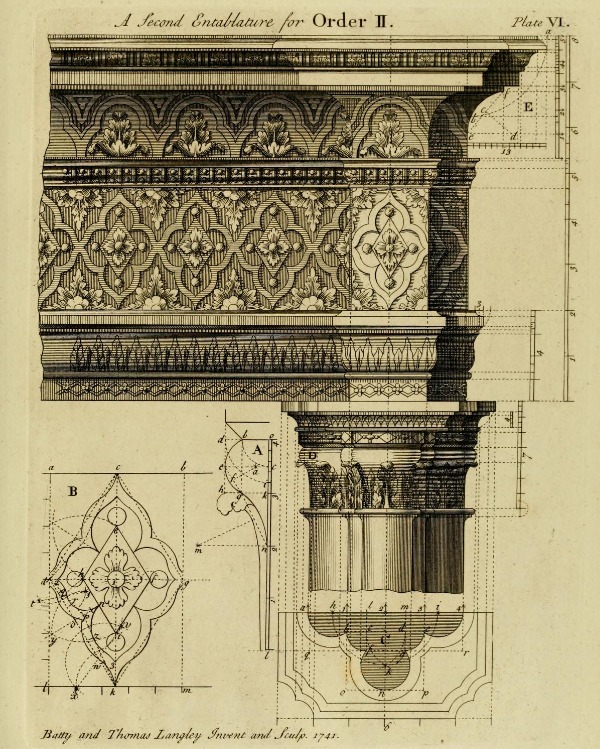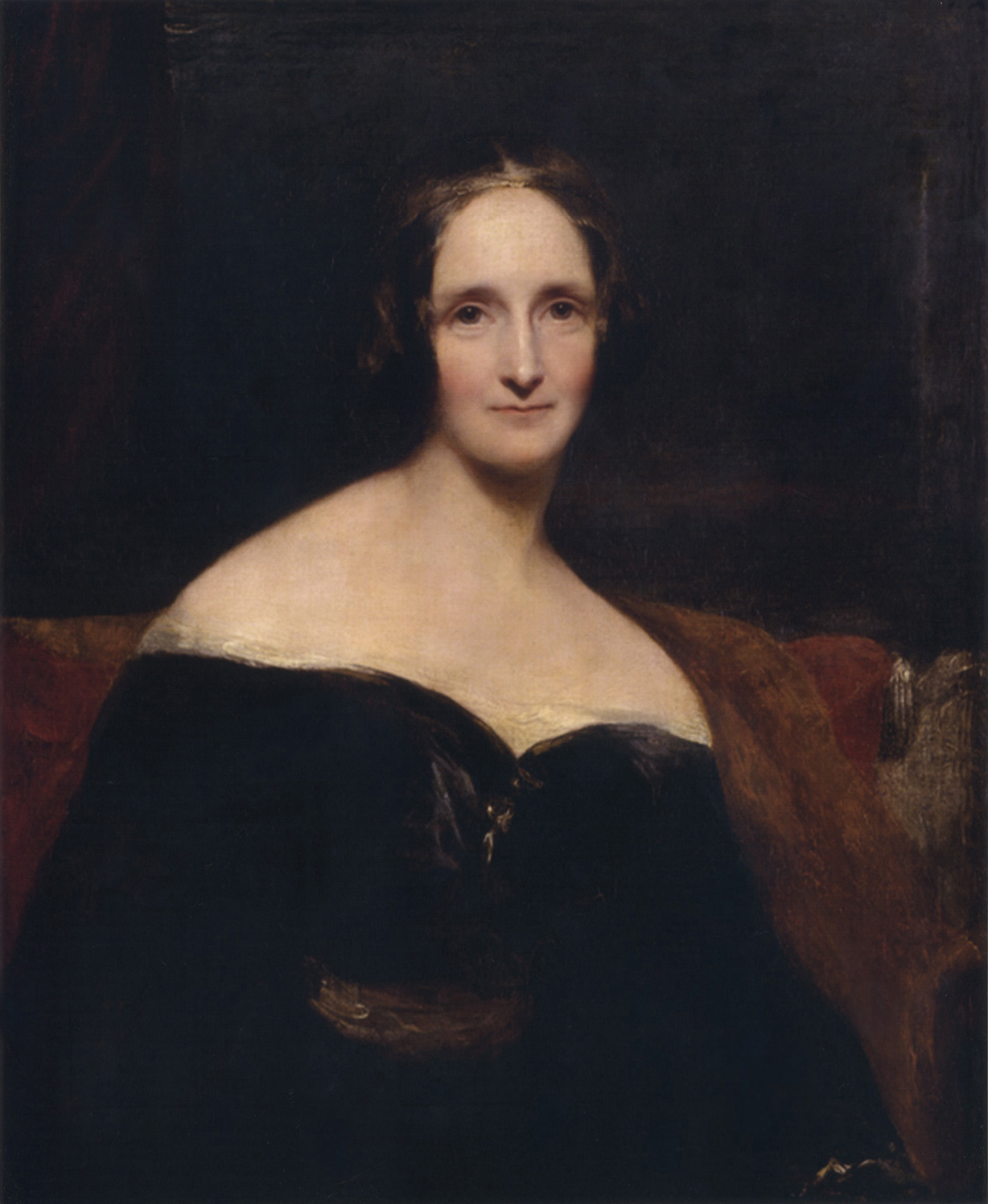plan for Gothic architecture

Gothic Literature: What is it?
Combines fiction, horror, and Romanticism. It entertains with horror. The setting is often gloomy, grotesque, and mysterious. Violent events and an atmosphere of decay can be expected. The themes of the supernatural, high emotions, inner turmoil, isolation, and Sublime nature are also a part of Gothic literature. The term Gothic refers to the architecture of the medieval buildings, which were often backdrops for the stories.
Classic Example:
Marry Shelley's, Frankenstein
Response:
Before reading Marry Shelley's Frankenstein the only version of the story I had been exposed to was "Young Frankenstein". The hilarious movie, directed in 1974 by Mel Brookes, is a parody of the original story that shows history repeating itself when Frankenstein's grandson begins to follow in his grandfather's footsteps. The movie keeps to the Gothic atmosphere, but completely changes the story for comedy's sake.
In the parody Frankenstein is curious and passionate. In the book he is arrogant, selfish, and irresponsible for his actions. Even when he finally does try to take responsibility it is too late, because his inaction ultimately caused the death of his loved ones. Marry Shelley's Doctor Frankenstein wants to be God, but can't face his creation. He is socially and emotionally isolated, as well as literally isolated when he goes to the icy North alone in search of his creation and revenge. His obsession for revenge, to wipe away his mistake that cost him everything, ends in his own demise.
Marry Shelley's novel was a very interesting read. The fact that the book itself is a confession of past wrongs given to a stranger, Walton, gave me the impression that Frankenstein was telling his story to me personally. This was quite entertaining and it made the book a page turner.
The most interesting aspect of reading Frankenstein for me was how I perceived the main characters, Victor and his monster. I felt compassion for the monster and not for Victor Frankenstein. This surprised me, because everything I have encountered about "the monster" before reading the actual book illustrates him as the bad-guy, except for the parody. I found a great disliking for Victor, because he essentially created a living being and then left it all alone in the world without any kind of education or morals. This I found to be really repulsive, because the death of innocent people could have been avoided if the monster had been "raised", which is supported by the fact that he taught himself how to speak and read eloquently on his own. Victor's abandonment of the monster forced the monster into isolation and a downward spiral of lamentation of his own "birth", which surfaces in revenge against Victor, his creator. The monster even calls itself an abortion. It's hard not to feel some compassion for it after that. Victor seems to be the picture of carelessness in human nature; maybe some knowledge is better left alone.
On the other hand, the monster obviously, at some point, knows the difference between right and wrong. This means all of the murders he committed had to be made with a choice to do wrong even though he claims to be gentle and misunderstood.
Frankenstein is Gothic in nature. Much of It's story takes place either in a desolate landscape or an icy wasteland. It explores suspense in the threat of the monster's actions. The supernatural idea of animating dead flesh becomes a possibility. Victor suffers inner turmoil over the result of his guilt at his arrogant ambition to hold the power of life like God. The strong emotions of loneliness, despair, guilt, and vengeance are dominate. Victor and his monster are both trapped by the affect they have on each other.
Richard Rothwell's "Portrait of Marry Shelley" 1840

 The monster enraged by reading Frankenstein's papers and learning how Frankenstein came to create him.
The monster enraged by reading Frankenstein's papers and learning how Frankenstein came to create him.Contemporary Example:
Reading Marry Shelley's Frankenstein made me think of a movie that is contemporary Gothic.
Tim Burton's Corpse Bride (2005)
Response:
This movie encompasses all of what it means for a media to be considered a part of the Gothic genre. (However, it's drama is lightened with a bit of humor, therefore its' also a bit of a parody commenting on the melodrama of classic Gothic Literature)
Centering around a man that is accidentally swept into literally marrying a "corpse" bride, the movie builds on the mystery behind the bride's death and the sinister motives of the characters surrounding the main character, who is just trying to find love. Destiny is a theme in the movie as well. The young man, Victor, is destined to marry a girl named Victoria through an arranged marriage. However, by the end of the movie it also appears he is destined to bring about justice for the murder of Emily, the corpse bride. As Victor gets to know Emily he encounters inner turmoil. He wants to get back to his living, breathing true love, Victoria, but doesn't know how to without betraying his corpse bride. Victor has to face his fear of the corpse bride to achieve an understanding with her, so that they can come to a conclusion where everyone wins and the corpse bride finds peace.
The story is purely fictional as it focuses on the supernatural dealings of the underworld. It combines the horror of the corpse bride with the romanticized ideal of high emotion as a source of aesthetic experience. The setting is largely the realm of the dead or an equally gloomy Victorian town. Many of the characters seen as antagonists are pictured as grotesque, in the form of the main character's parents and mysterious in the form of evil Lord Barkis. The violent events of the corpse bride's murder, the attempted murder of Victoria and the accidental death of Lord Barkis fuel the atmosphere of decay and suspense. The high emotions and inner turmoil experienced by the characters throughout the movie make the Gothic atmosphere complete.
Interestingly, the characters find happiness and the evil of the past, in the form of Lord Barkis, is destroyed, unlike in Frankenstein, where the price for past mistakes is death.
Required Movie:
Ken Russell's Gothic (1986)

The movie Gothic is based on the factual event of 18 year old Mary Godwin, the author of Frankenstein, visiting Lord Byron in Villa Diodati by Lake Geneva along with her half sister, Jane, her soon to be husband, Percy Shelley, and the physician John Polidari. During this visit a challenge was set to write a horror story. This challenge led to Mary Godwin penning Frankenstein and John Polidori writing The Vampyre. Also influential to Mary writing Frankenstein was a nightmare she had during the same visit, which involved a mad scientist believing he could be God and giving life to a monster.
Ken Russel's Gothic only follows the facts briefly during the beginning of the movie, which then proceeds to turn literally into a nightmare come to life. His version on the events or reasons leading up to Mary Shelley's Frankenstein struck me as bizarre and shocking more than they are frightening. This is due to the horrors illustrated being extremely specific to the characters. For example, Percy Shelley is terrified of a vision he has had of a woman possessing eyeballs where her nipples should be. This imagery does not cause me to be afraid. Likewise, much of the imagery was, designed to be gross. The plate full of leeches for example is nasty, but not scream worthy.
In regard to the film Gothic actually being Gothic, yes it was, very much so.
The film is set in a secluded castle, during a storm with no way out. The characters begin to play with the idea of creation and have a seance of sorts where they call up their deepest fears and unknowingly unleash a monster of their own imagination into the world. Lord Byron is the man which many monsters were based off of, one of which being a vampyre. He is controlling, imposing, selfish, and dangerous, as well as the reason why things went downhill so fast. The questions, Should we create? and What do we do now that we have? are repeatedly talked about. Questions about free love, religion and science call to mind the Age of Enlightenment or the Age of Reason, out of which much of "Gothic" was born. The monster is never really seen or fully understood, but Mary Shelley crushes the skull out of which it supposedly came, fulfilling the idea that the Gothic damsel must face her fear in the end. The viewer is left with Mary Shelley saying that the monster is not really dead and will haunt them for the rest of their lives "to the grave". (Perhaps Ken Russel's nod to Frankenstein, since Doctor Frankenstein's monster does indeed chase him to the grave)
Henry Fuseli "The Nightmare" 1781 (Look Familiar?)

No comments:
Post a Comment